Demand for chocolate treats remains strong, but today’s shoppers are also keen to try out premium products and those with a healthy twist.
The total confectionery market is now worth £5.18bn, with the chocolate segment contributing £3.98bn (Nielsen 3 0 December 2017). Confectionery is not only the biggest food and drink category in convenience (Kantar 2017), it is also the most impulsive category (CTT 2017), meaning smart ranges and displays are critical for c-store retailers.
The confectionery category has seen quite a bit of innovation in recent years. Hancocks purchasing director Jonathan Summerley believes much of this has been somewhat forced by the impending sugar tax. He says the strong media focus given to sugar and health is beginning to impact customers’ choices and as a result we have seen the market reacting through greater choice available for dietary-specific needs.
He adds: “Customers are more demanding than ever as they crave high value, high quality, diversity, dimension and now ‘healthy’ alternatives. As a cost engineering process, the influence of ‘shrinkflation’ has somewhat alienated customers. NPD is responding to the challenges of re-targeting these customers.”
Donna Morgan, of Brownlies of Biggar, Edinburgh, agrees that awareness of sugar is likely to rocket this year thanks to the soft drinks levy. However, from what she’s seen so far, she thinks there’ll always be interest in sugary treats to get people through the mid-morning and mid-afternoon slumps.
“I wouldn’t say we’ve noticed a decrease in sales of chocolate. I would say it’s a flat category, despite the fact we’ve taken chocolate off the checkouts and replaced it with fruit and nuts.”
Donna believes that retailers feel very pressured to be responsible and cater to everyone’s health requirements, while offering all the products people have always enjoyed buying.
“As a retailer you have to give people the choice to eat healthily or to eat a treat. Often it’s put on us to be everything to everyone and be responsible for providing healthy food. Soon we’ll be at the forefront of the sugar drinks tax in April when that comes in.”
Summerley adds to Donna’s point, saying that there’s greater pressure on retailers now to ensure they are stocking the right products to meet all shoppers’ dietary wants and needs. “We must all remember that confectionery is a treat and is best enjoyed as part of a balanced diet; the demand for chocolate will never disappear, because the UK is a nation of habitual chocolate eaters. This means that convenience stores must think more carefully than ever about what is stocked on their shelves and use promotional activity carefully to ensure the right impression is received.”
Nestlé creates KitKat spin-off
Nestlé Confectionery’s flagship brand KitKat has announced its biggest innovation of 2018: Kitkat Senses.
KitKat Senses is a box of 20 individually-wrapped bite-size chocolates and sees KitKat move into a more indulgent, sharing format.
There are three different flavours of KitKat Senses: hazelnut; double chocolate; and salted caramel.
Each sweet treat is the combination of KitKat chocolate and wafer, featuring either a layer of indulgent praline and crunchy pieces of hazelnut, salted caramel filling infused with crunchy caramel flakes, or rich chocolate ganache and crunchy cocoa nibs.
The boxes are available in two varieties: a mixed box which contains all three flavours; or a hazelnut-only box. Both have an rrp of £3.99 and are available to retailers now.
Once popped open each box can be turned into a sharing platter, making it ideal for dipping into with friends and family.
The launch is being supported by a £7m campaign running across 2018. The activity will include new TV advertising launching at the end of March and running until the beginning of June, as well as national sampling to drive trial and social media activity.
The campaign is estimated to reach 98% of the target audience 36 times (Zenith Optimedia, IPA Touchpoints Channel Planner, January 2018).
Investing in bags
When it comes to deciding what chocolate products people still want to see on their local store’s shelves, bags of chocolates are definitely a must. The format is the fastest growing standard chocolate segment (IRI 1 January 2018). Chocolate bags were pushed initially by Cadbury’s, with products such as Wispa Bites, but many others have added this format since.
Mandi Duncan, of Day-Today in Barassie, South Ayrshire, has noticed people buying more sharing bags, but she says this has nothing to do with people wanting to share. “People do buy a lot of the sharing pouches and the big bars, but they seem to buy them to eat on their own. I think they buy them because they seem to be better value for money than a smaller format.”
While this may be the case in many circumstances, Lauren George, brand and trade PR manager for Mars Chocolate UK & Wrigley UK, says it is the trend for sharing and Big Night In occasions that has led to consumers favouring treat bags and pouches. She adds that sharing blocks have also been pushed by this trend.
“We are seeing large blocks and pouches continuing to play a significant role in the confectionery category as more consumers look for better value. For retailers, maximising sales of these products is crucial to sales.
“As well as large blocks, bitesize brands continue to be popular with consumers. Brands such as Maltesers, which is proud to be the UK’s number-one bitesize brand (Impulse Report Total Independents P3 2016), and M&M’s, are both great options for sharing.”
George adds: “As sharing trends continue to become more popular, the biggest boost in sales has come from Galaxy Caramel milk block, seeing a 1.2% increase in value sales compared with a year ago, and Galaxy Milk Block XX Large Everyday, which has seen a global increase in sales by 54.7% (Independents ranking P13 2017).”
Chocolate snacks designed for vegans
As consumers continue to think more about their health, vegan alternatives have enjoyed sales growth across all categories in the grocery industry, not least within chocolate.
Amanda Cook, Founder of I Love Snacks – the gluten-free, GMO-free, vegan and healthy snacks brand – says the growth of dairy alternatives has been the biggest trend to impact the chocolate sector.
“Vegan and dairy-free chocolates have hit the shelves and whether by dietary need or lifestyle choice, consumers have created demand for innovative options.
“I Love Snacks launched in 2017. We source only the finest ingredients from their country of origin. That way we can ensure top quality and great taste.
“I Love Snacks 70% Cocoa Dark Belgian Chocolate contains 119 calories and is attractively packaged in a handy-sized pouch – perfect for convenience shoppers on the go.”
Cook adds: “The I Love Snacks 70% Cocoa Dark Belgian Chocolate is vegan, vegetarian and gluten-free, meeting the requirements of today’s questioning consumer.”
Quality and health
Another chocolate segment growing in popularity is premium chocolate, which has driven growth both into the category and into tablets, with consumer spending up 1.6% (IRI, Total market, including discounters, sales value, MAT 1 January 2018).
Levi Boorer, customer development director at Ferrero, says 70% of shoppers now value the quality of the chocolate over the quantity. “Confectionery is one of the few categories where consumers are willing to trade up to more premium treats, especially at key seasonal trading spikes such as Christmas and spring. We saw that during the Christmas period just gone – the biggest growth was coming from ‘make a statement gifting’ and ‘make a statement sharing’ (Nielsen, Christmas 2017 vs YA).Shoppers were on a mission to trade up.”
Richard Wilkinson, co-founder of Doisy and Dam chocolate, adds that customers are focusing on the quality of chocolate as well as caring more about its provenance. He says: “Transparency and honesty are becoming key; murky supply chains are no longer acceptable.”
One company which has tapped into this trend is Lovely Fodder, the family-owned UK company which launched Benefit Drinks and Benefit Shakes, a range of vitamin-enriched vegetable & fruit juices and dairy-free shakes. It is extending its range of better-for-you products with new Benefit Chocolate. It says this innovative chocolate will combine the best ingredients with added “benefits” to create functional, yet indulgent bars of chocolate.
The new “farm to bar” range uses single-origin chocolate sourced directly from the Casa Luker Estate in Colombia.
Gavin Cox, founder of Benefit, explains what makes these beans so special: “Colombia has some of the best ‘fino de aroma’ cacao beans in the world; a category established by the International Cocoa Organization for cacao that reaches a certain flavour, aroma, and quality level and are the only cacao beans that Benefit uses.
“The exceptional quality of the cacao means the Benefit Dark Chocolate range avoids milk-solids and is entirely vegan.”
One of the key attributes of the bars is the high level of cacao compared with the market average (which is 85% compared with 54%). Dark chocolate is benefitting from its image as a superfood. Unusually for a chocolate product, the range has added functional benefits: protein from the almond butter, coconut and pea protein; 50% of your recommended daily intake of 12 vitamins; and key energy-boosting vitamins including B5, B6 and B12.
Thanks to the increased interest in high-quality chocolate, dark chocolate has seen consistent growth over the past three years and is now worth £211m, accounting for 70% of the premium market (Nielsen Scantrack MAT to w/e 7 October 2017).
Jimmy Attias, at Bean and Pod, agrees that dark chocolate is being seen by some as a superfood. “Premium and dark chocolates are increasing in popularity. Consumers want to indulge in a treat now and again – and they are looking for premium quality options. Health and wellbeing is also driving demand for dark chocolate, as it is seen as a superfood. We have recognised this consumer demand with the inclusion of dark chocolate dairy-free and vegan options in the Bean and Pod range.
“Sweet and savoury combinations are also trending in the category. Salted caramel is a popular flavour, along with chocolate coated nuts. Again, we took these indicators of consumer preferences and added them into our gourmet collection to create an indulgent mix of flavours. To hit the spot with those looking for a healthier treat, consumers can enjoy chocolate coating over a salted pumpkin seed.”
Ferrero springs into action
Ferrero recently started its wider rollout of its new Kinder Bueno Mini Mix Box (rrp £2), which reflects the rise in popularity of sharing products within the sector.
The new variant includes a mix of three flavours of Kinder Bueno: classic; white; and dark chocolate.
The confectionery giant is also looking to cash in on spring trade with some new seasonal packaging.
Levi Boorer, customer development director at Ferrero, says: “Spring is an important opportunity for retailers, with six in 10 impulse buyers stating that seasonal packaging is important (Advantage Group Seasonal Research December 2016).
“In response to this we have launched new seasonal packaging to help retailers upsell during this key trading period, as well as a personalisation campaign across the Thorntons range, bringing the brand’s rich heritage in producing high-quality, lovingly-crafted chocolates to life.
“The promotion will be live across a range of 14 eggs and novelties.
“Shoppers will have the chance to win hundreds of personalised chocolate speech bubbles for their loved ones.”
It’s not just smaller, specialist brands that are reaping the rewards of the trend for high-quality ingredients and cocoa-rich chocolate. Mars Chocolate UK recently embarked on lifestyle activation that hit the shops in the new year, incorporating the company’s latest product innovations.
‘New Year, New Choices’ offers consumers the latest in a wave of new lifestyle products such as GoodnessKnows, Mars Chocolate UK’s first new brand in 20 years, which launched this summer, and the Mars and Snickers protein bars.
As people’s lives are becoming busier, lifestyle products offer a new type of snack – something that is convenient, in more flexible formats, without compromising on the quality of ingredients, as well as matching the values consumers live by.
Coming in four snackable squares containing fruit, whole nuts and dipped in dark chocolate, GoodnessKnows is described as a high-quality and shareable treat that can be eaten all at once, or snacked on throughout the day.
“We know there is a growing trend towards healthy eating and dark chocolate lends itself to this because it has less sugar than white and milk chocolate, which may explain why it has grown in popularity,” explains Mike Zietek, culinary technical leader at Mars Chocolate UK.
“That’s why we have introduced GoodnessKnows into the market, as a product that will complement people’s lifestyle, but still has the indulgent factor.”
West Sussex retailer Ramesh Shingadia says that sales in the chocolate category have reduced in his two Londis stores in Horsham, from being worth about 20% of sales, to about 15%.
He’s sure the reason for this is the increased health-consciousness in society. “This could be because people are a lot more health and sugar conscious. I think this is only going to increase over the next year with the soft drinks levy coming into place and making people even more aware of sugar levels in products.”
Mandi points out that there’s been little reduced-sugar NPD within the chocolate category and, looking at examples in sugar confectionery, she thinks manufacturers are right not to go down this route.
“Unlike other categories, there hasn’t been any low- and no-sugar innovation in the chocolate category. There’s been a fair bit in the sugar confectionery category, but my shoppers haven’t really shown any interest in these. I don’t know if people assume they just won’t taste very nice if they have less sugar in.”
Benefit from smaller case sizes with nestle
Nestlé Confectionery is aiming to drive impulse sales and profits for convenience retailers with the introduction of a new smaller size outer across a range of its best-selling singles, including all the ‘2 for £1’ pricemarked packs.
The rollout began this month and is a permanent change to the outer size. The core lines which will move to the new outer include KitKat 4 Finger, KitKat Chunky, Aero Peppermint Medium, Aero Milk Medium, Toffee Crisp, Yorkie Original and Yorkie Raisin and Biscuit, while Rowntree’s Fruit Pastilles and Polo Original, Sugar Free and Spearmint will all move to a 32-count outer.
For retailers, the smaller outers require a lower cost outlay compared with larger outers and are therefore beneficial to cash flow.
Nestlé is the first major confectionery manufacturer to introduce smaller outers across its core singles products. The move follows on from another Nestlé initiative to benefit the convenience channel, which saw a permanent ‘2 for £1’ flash launched on a range of the favourite singles earlier this summer.
Pricemarked packs (PMPs) are a proven way for retailers to drive sales and a study by HIM has shown that a multibuy promotion is favoured by both shoppers and retailers.
Both PMPs and standard non-PMPs will be available in the 24 count outers.
In addition, the new size outers will all benefit from a redesign to create consistency and alignment across the Nestlé Confectionery brands.
Andrew Ovens, marketing manager at Big Bear Confectionery, agrees, saying that chocolate benefits from the fact it is seen as an occasional treat and isn’t masking itself as anything else.
“It’s clear that sugar is still a talking point but, from a confectionery standpoint, we aren’t seeing a huge negative impact,” explains Ovens. “Consumers see sugar confectionery as an occasional treat to be enjoyed in moderation – our Poppets 40g boxes are particularly popular for this reason.
“This is in contrast to other categories which have come under fire for so-called ‘hidden’ sugars: products which are typically considered to be savoury, or those with a low-fat positioning, which gloss over their high-sugar content.”
Paul Gardner, of Budgens of Islington, London, says that despite selling a huge array of healthy snacks, his chocolate category is still very popular. He says the demand for healthy snacks and the demand for a chocolate treat are two very separate missions.
“You have to sell all the main products such as Cadbury Dairy Milk, Mars and Twix, but we also like to sell more interesting products such as dark chocolate-covered marzipan. It’s good to offer products different to those found in the multiples.
“I sell a lot of healthy snacks such as the Kind bars. I don’t know how healthy these fruit and nut bars are as they’re all gelled together with syrup or honey, but they look a lot healthier as you can see they are mostly made from natural products. Those are all very popular. I hope these products are popular because I love chocolate and if I eat something else that I don’t enjoy as much and then discover it’s not even any better for me than the chocolate then I would be very annoyed!”
Chris Greenwood, manager of Hunt’s Freshfields in Formby, Merseyside, thinks one good addition to the chocolate range could be vegan options, depending on the demographics of the area and if there are enough teens and young adults who are likely to be following the trend.
He says: “I know that a lot of my staff went vegan for January and it’s definitely something that’s becoming more popular among students and younger people. I haven’t had any shoppers specifically ask for vegan chocolate, but perhaps it’s just that they don’t expect us to sell it.”
Pricemarked packs
Chris says that one big seller that comes to mind when thinking of popular NPD is the Oreo Dairy Milk bars, but he adds that this could very well be just because they are in £1 pricemarked packs (PMPs).
“Most things go to £1 when on promotion and they’ll always sell at that price. The margin on the Oreo Dairy Milk is pretty poor, but we sell it in such volume that it still makes money.
“Any chocolate sells when it’s on promotion. Even through January we had mini eggs on promotion and they were absolutely flying out despite all those healthy-eating messages you get at the start of a new year.”
It’s for this reason that Nestlé Confectionery launched its PMP range in July 2016. The ‘2 for £1’ pricemark features across 10 of its bestselling packs and is aimed at driving sales and profits for convenience retailers.
Popular chocolate singles such as KitKat, Aero, Yorkie and Toffee Crisp all permanently feature a ‘two for £1’ price flash.
“A multibuy promotion provides an excellent opportunity for convenience retailers to boost sales and profits. In comparison to packs pricemarked at a discounted price of 50p, a ‘2 for £1’ multi-buy is almost certain to make more cash margin for retailers. This is because it still provides retailers with the flexibility to set their prices for single packs. Therefore, retailers can benefit from both the uplift in sales a ‘2 for £1’ promotion will generate, as well the higher margins from sales of single bars.”
Mandi agrees that £1 PMPs are a great way to catch the shopper’s eye and says these are the main sellers in the chocolate category.
It is essential to provide a good range of high-value chocolate. Ian Millar, owner of Sandwiches@ Millars, points out that his Happy Shopper range of chocolate sells particularly well with school children who are given only a certain amount of money each day.
Richard Wilkinson at Doisy and Dam chocolate concludes: “The future of the chocolate category is a wider range of chocolates on offer, everything from the standard countlines up to single-origin, high- quality chocolate bars. Customers want to be able to make mindful and informed choices. It’s no longer enough to just put Dairy Milk on the shelf, even Green & Black’s is not now differentiated enough to provide category growth at the premium end.
“I think we’ll see a push towards quality, transparency and mass-premium products, providing a new level of premium in the category.”
The moral of the story is: choice, choice and more choice. Provide chocolate to meet the needs of those wanting a simple sugary pick-me-up and others who might want a more permissible treat which can also offer some health benefits.
If you want to increase your healthier offering, try stocking dark chocolate with a high-cocoa content, and see how shoppers respond to a non-dairy SKU. Ensure to provide PMPs as well as premium lines and plenty of sharing bags.
Mondelez meets demand for sharing and premium
Ian Millar, of Sandwiches@Millars in East View, Morpeth, says sales of Cadbury chocolate are head and shoulders above the rest in his store as his shoppers like to buy their old favourites.
Susan Nash, trade communications manager at Mondelez International, says the company is the category leader, with a 33.1% share, and the greatest contributor to value growth of all branded manufacturers (Nielsen, MAT, Total Coverage including discounters, to 30 December 2017).
A recent Mondelez International brand partnership – Cadbury and Oreo – headed into bitesize at the beginning of this year with the launch of Cadbury Oreo Bites. The new bags include small Cadbury bitesize pieces filled with a creamy and crunchy Oreo filling. They join Picnic Bites and Fudge Minis.
However, Nash points out that among so much sharing innovation, the importance of singles should not be forgotten. “Singles confectionery is a critically important category and if its potential is fully maximised, it can play a huge role in driving incremental sales. Mondelez International brands claim five out of 10 of the top selling products in the category, including Twirl, Wispa, Cadbury Dairy Milk, Boost and Wispa Gold (IRI Market Place, value, MAT, independents and symbols, 12 November 2017, adult singles, excludes duos).”
The dark side
Mondelez has tapped into the growing interest in dark chocolate with its new Green & Black’s Velvet Edition.
“We know that while many people love dark chocolate, others sometimes find the taste a little bitter,” explains Brandt Maybury, Green & Black’s taste specialist. “We scoured the globe to find the right cocoa beans to create the unique taste profile of Green & Black’s Velvet Edition; a dark 70% chocolate that is rich in cocoa content, yet smooth in flavour.”
The new Green & Black’s Praline range is also tapping into the premiumisation trend. It offers rich dark chocolate or smooth milk chocolate with a truffle filling. The chocs are individually wrapped and packed in gifting boxes.









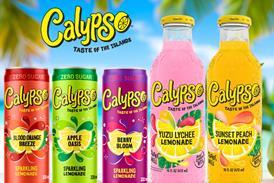

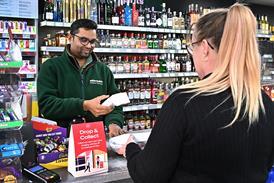








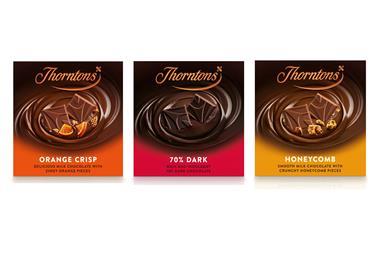
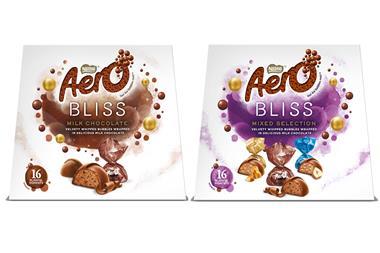
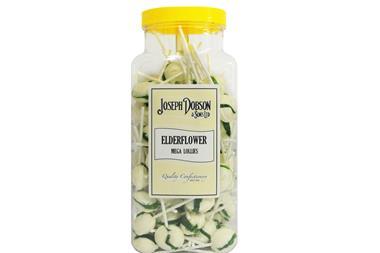

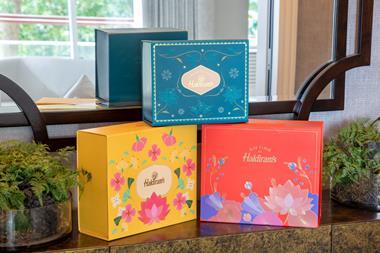







No comments yet